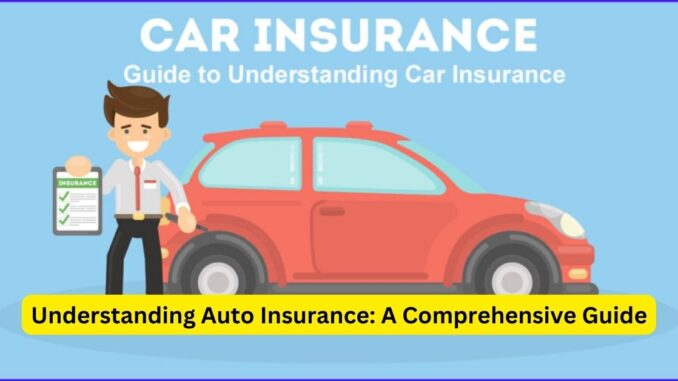
Auto insurance is a vital aspect of responsible vehicle ownership. It provides financial protection against unforeseen accidents, damages, and liabilities that can arise from driving. Having a comprehensive understanding of auto insurance is essential for making informed decisions about coverage and ensuring you’re adequately protected on the road.
Types of Auto Insurance Coverage
- Liability Coverage: This is the most basic type of auto insurance and is often legally required. It covers the costs of bodily injuries and property damage to others if you’re at fault in an accident.
- Collision Coverage: This type of coverage pays for the repair or replacement of your vehicle if it’s damaged in a collision, regardless of who is at fault.
- Comprehensive Coverage: This covers damages to your vehicle that are not caused by a collision, such as theft, vandalism, natural disasters, and animal collisions.
- Uninsured/Underinsured Motorist Coverage: If you’re in an accident with a driver who doesn’t have insurance or has insufficient coverage, this type of insurance helps cover your medical expenses and damages.
- Personal Injury Protection (PIP) Coverage: PIP covers medical expenses for you and your passengers, regardless of who is at fault in an accident, and may also cover lost wages and other related costs.
- Medical Payments Coverage: Similar to PIP, this coverage specifically pays for medical expenses resulting from an accident, regardless of fault. It can be used to cover co-pays, deductibles, and other medical-related costs.
Factors Affecting Premiums
Several factors influence the cost of your auto insurance premiums. These include:
- Driving History: A clean driving record typically leads to lower premiums, while accidents and traffic violations can increase your rates.
- Coverage and Deductibles: The extent of coverage you choose and the deductible (the amount you pay out of pocket before insurance kicks in) can impact your premiums.
- Vehicle Type: The make, model, and year of your vehicle affect insurance costs. High-performance cars and luxury vehicles often come with higher premiums due to their repair and replacement costs.
- Location: Where you live matters. Areas with higher crime rates or more traffic congestion might have higher premiums.
- Age and Gender: Younger, less experienced drivers usually have higher premiums. Statistically, male drivers under 25 are also considered higher risk.
- Credit History: In some places, insurance companies use credit scores to assess risk. Better credit often leads to lower premiums.
Choosing the Right Coverage
When selecting auto insurance coverage, consider your driving habits, financial situation, and the value of your vehicle. While saving money is important, it’s equally crucial to have adequate coverage to protect yourself from unexpected expenses.
Conclusion
Auto insurance is a complex topic, but having a solid understanding of its various aspects can help you make informed decisions that balance coverage and cost. By knowing the types of coverage available, the factors influencing your premiums, and how to choose the right coverage for your needs, you can navigate the world of auto insurance with confidence and peace of mind.
Leave a Reply